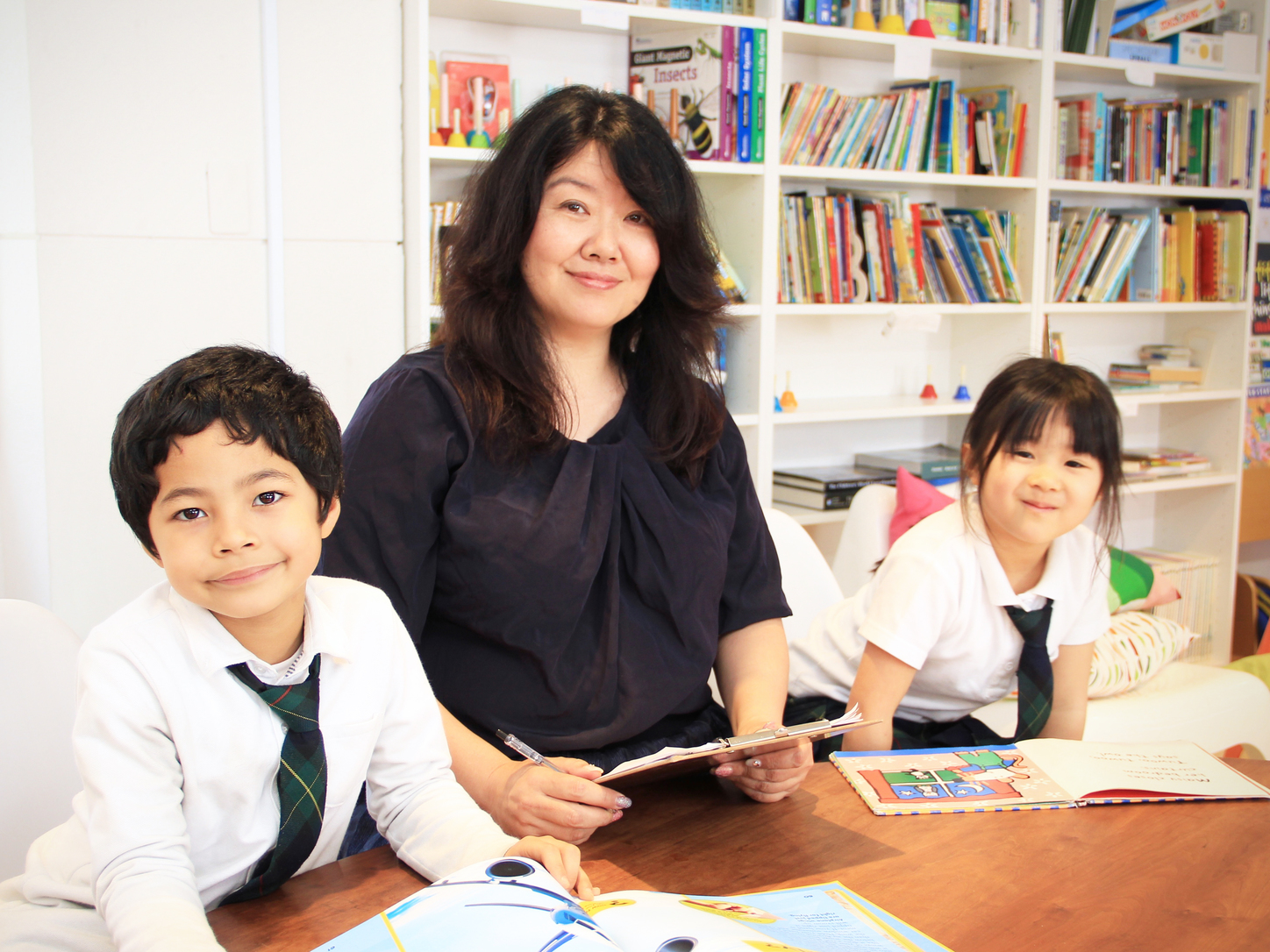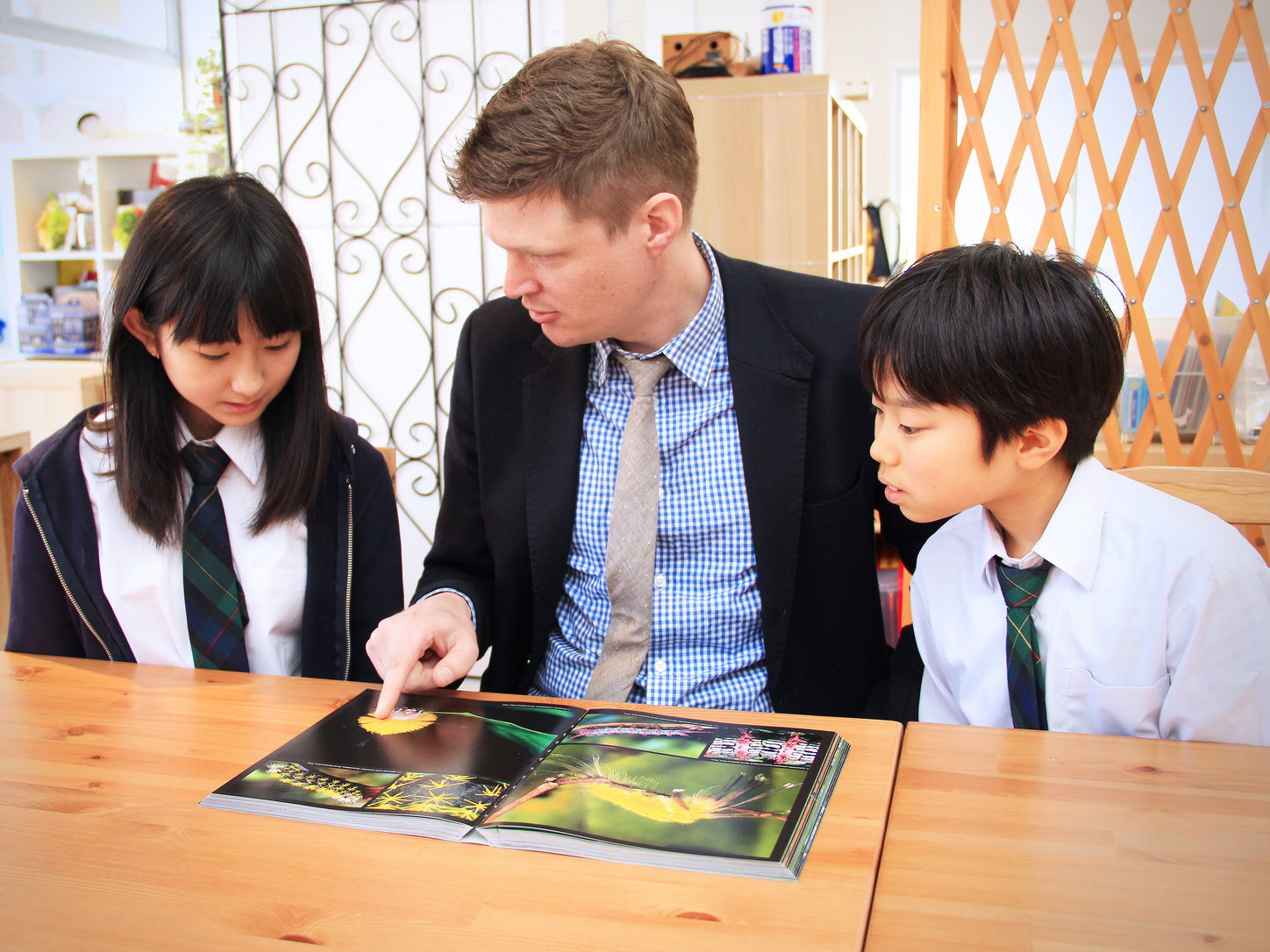Eleven years ago, when Kayoko Sugawara founded Camelot as an international pre-school, she would never have imagined that she would go on to open both an elementary and a middle school. But her unique teaching philosophies, combined with affordable fees, have made Camelot so popular that Sugawara has boldly continued to expand.
We sat down with Camelot Director Sugawara, new Head of School Russell Bowley, and the new Head of Middle School Graeme Peel, to hear more about the school’s plans.

Camelot Director Kayoko Sugawara and students
Why do you feel there’s a need for a new international middle school in Tokyo?
Sugawara: Three years ago, I opened Camelot’s elementary school. Even though it was a risk and a challenge, we now have around 40 students and have recently moved to a bigger location in Kotake-Mukaihara to accommodate even more. Parents have always told me that they would keep their children at Camelot if they could, so I felt the next logical step was to open a middle school. Our fees are in line with the international courses offered by Japanese schools [¥800,000 per year for pre-school; ¥1,150,000 per year for elementary school], so it’s a good option for returnees or foreign students who can’t afford more expensive international schools. Good quality international education should be more broadly available, which means it has to be more affordable.
Peel: Although there are some Japanese schools offering international courses, I have found there is a conflict between what these schools are trying to strike as a traditional, private Japanese school and what you need to be learning to get into universities in, say, the US or England. At Camelot, we offer a high standard of education, but with international values and a reduced cost to the parents.
Bowley: Absolutely. Our philosophy places emphasis on individuals and their needs. The more that students learn about themselves and the world they inhabit, the more they are able to make wise decisions about their own educational choices.
“I think you can achieve the goals that traditional education sets out without ever doing it in a traditional way”
Could you describe your teaching style?
Sugawara: We have always had a very fluid system that allows each student to adapt their daily class schedule to suit their level. For example, if a student is in grade 3 but their math or English is at a lower level, then for those subjects they can join a class in a lower grade. They can also jump up to a more advanced class where necessary. Also, I believe that a good education isn’t just about getting good scores on tests; it’s also about developing as a human being and learning how to build relationships.
Peel: What I’ve found is that the aspects of adolescence that people find negative are often a reaction to traditional teaching and education. When you create an environment in which students have a drive, and they’re independently wanting to learn, they’re far more self-motivated.
Bowley: It’s important that students feel they have ownership of the learning process. Everything they learn has to be relevant to them and their own paths. We want to create an environment that encourages enquiring minds.

Camelot Head of Middle School Graeme Peel and students
How do you balance traditional education with this way of thinking?
Peel: My approach has always been to do things in class around what the students are interested in, and following that they are motivated to go home and study for tests independently. I think that you can achieve the goals that traditional education sets out without ever doing it in a traditional way.
Bowley: I agree. Student interest is the most important thing. The idea of study as a joy
and a fascination supports and transcends the goals of traditional education.
How do you structure the curriculum?
Sugawara: At our elementary school, our focus is IPC (International Primary Curriculum), but we use the American Core Standard for language art, and the Singapore and American Core Standard for Math.
Peel: For the middle school, we’re still developing the curriculum but I think it’s important to have some accreditation such as the Cambridge or AP qualifications, and an external
examination board. We want to reassure parents of the standards we’re reaching for.
Applications for Camelot International Middle School are now open. For more information
visit camelot.tokyo.jp, call 03-5948-3993 or email [email protected]
Sponsored Post









